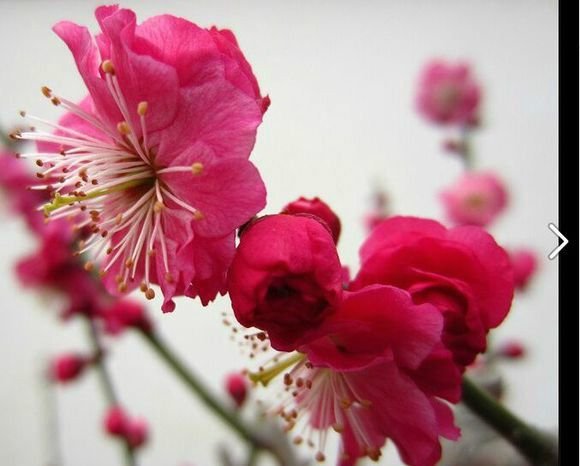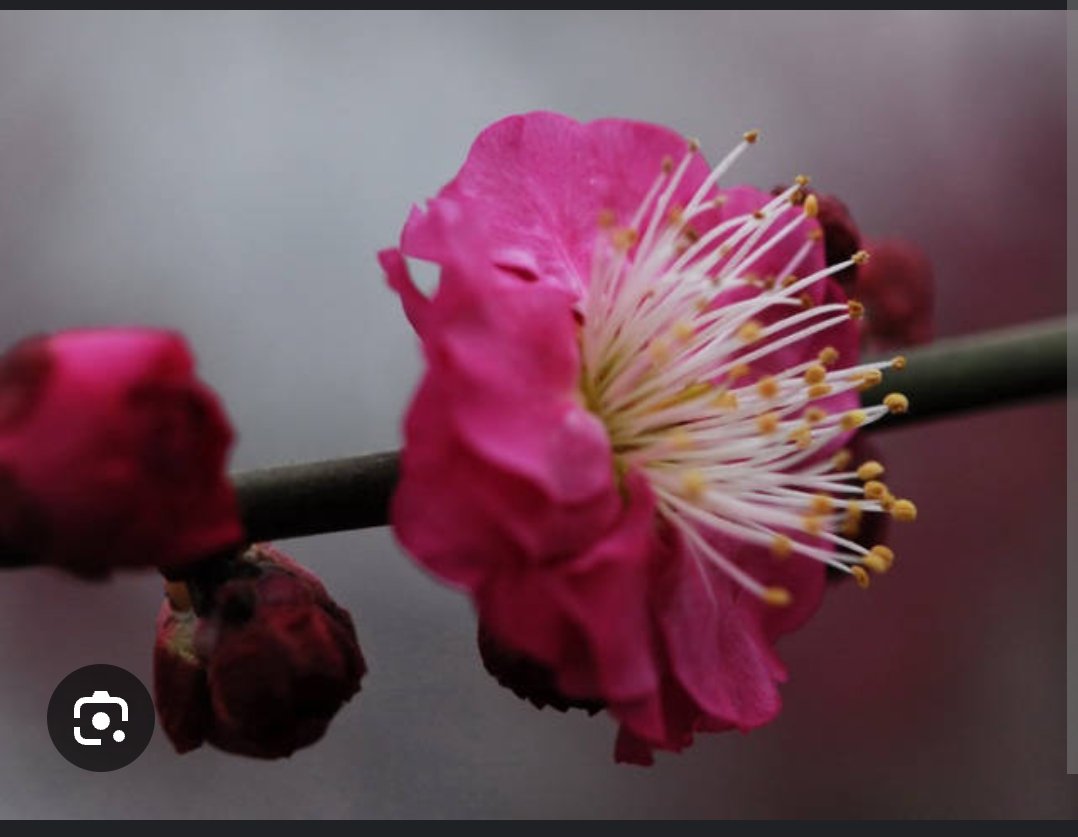White-Bearded Vermilion Plum (白须朱砂梅) five years
White-Bearded Vermilion Plum (白须朱砂梅)
The White-Bearded Vermilion Plum (Báixū Zhūshā Méi, 白须朱砂梅) is a rare and elegant cultivar of the Prunus mume, a species commonly known as the Chinese plum or Japanese apricot. This variety is particularly cherished for its distinctive aesthetic appeal and cultural significance in traditional Chinese horticulture.
Characteristics
Flowers: The blossoms of the White-Bearded Vermilion Plum exhibit a striking contrast of colors. The petals are a deep vermilion red, creating a vibrant and warm appearance.
Filaments: The most distinguishing feature of this cultivar is its long, white stamens, which resemble a delicate white beard, giving the tree its poetic name.
Fragrance: Like other varieties of Prunus mume, it exudes a strong and pleasant fragrance, often associated with winter resilience and purity in Chinese culture.
Blooming Season: It typically flowers in late winter to early spring, adding color and vibrancy to the colder months.
Cultural Significance
In traditional Chinese culture, the plum blossom symbolizes perseverance, hope, and renewal, as it blooms amid winter’s chill. The White-Bearded Vermilion Plum, with its unique combination of red petals and white filaments, is especially valued for its rare beauty and poetic connotations. It is often depicted in classical Chinese paintings and poetry, celebrating its refined elegance and resilient spirit.
This cultivar is widely appreciated in Chinese gardens, bonsai cultivation, and floral artistry, making it a cherished part of China’s botanical heritage.
White-Bearded Vermilion Plum (白须朱砂梅)
The White-Bearded Vermilion Plum (Báixū Zhūshā Méi, 白须朱砂梅) is a rare and elegant cultivar of the Prunus mume, a species commonly known as the Chinese plum or Japanese apricot. This variety is particularly cherished for its distinctive aesthetic appeal and cultural significance in traditional Chinese horticulture.
Characteristics
Flowers: The blossoms of the White-Bearded Vermilion Plum exhibit a striking contrast of colors. The petals are a deep vermilion red, creating a vibrant and warm appearance.
Filaments: The most distinguishing feature of this cultivar is its long, white stamens, which resemble a delicate white beard, giving the tree its poetic name.
Fragrance: Like other varieties of Prunus mume, it exudes a strong and pleasant fragrance, often associated with winter resilience and purity in Chinese culture.
Blooming Season: It typically flowers in late winter to early spring, adding color and vibrancy to the colder months.
Cultural Significance
In traditional Chinese culture, the plum blossom symbolizes perseverance, hope, and renewal, as it blooms amid winter’s chill. The White-Bearded Vermilion Plum, with its unique combination of red petals and white filaments, is especially valued for its rare beauty and poetic connotations. It is often depicted in classical Chinese paintings and poetry, celebrating its refined elegance and resilient spirit.
This cultivar is widely appreciated in Chinese gardens, bonsai cultivation, and floral artistry, making it a cherished part of China’s botanical heritage.
White-Bearded Vermilion Plum (白须朱砂梅)
The White-Bearded Vermilion Plum (Báixū Zhūshā Méi, 白须朱砂梅) is a rare and elegant cultivar of the Prunus mume, a species commonly known as the Chinese plum or Japanese apricot. This variety is particularly cherished for its distinctive aesthetic appeal and cultural significance in traditional Chinese horticulture.
Characteristics
Flowers: The blossoms of the White-Bearded Vermilion Plum exhibit a striking contrast of colors. The petals are a deep vermilion red, creating a vibrant and warm appearance.
Filaments: The most distinguishing feature of this cultivar is its long, white stamens, which resemble a delicate white beard, giving the tree its poetic name.
Fragrance: Like other varieties of Prunus mume, it exudes a strong and pleasant fragrance, often associated with winter resilience and purity in Chinese culture.
Blooming Season: It typically flowers in late winter to early spring, adding color and vibrancy to the colder months.
Cultural Significance
In traditional Chinese culture, the plum blossom symbolizes perseverance, hope, and renewal, as it blooms amid winter’s chill. The White-Bearded Vermilion Plum, with its unique combination of red petals and white filaments, is especially valued for its rare beauty and poetic connotations. It is often depicted in classical Chinese paintings and poetry, celebrating its refined elegance and resilient spirit.
This cultivar is widely appreciated in Chinese gardens, bonsai cultivation, and floral artistry, making it a cherished part of China’s botanical heritage.

